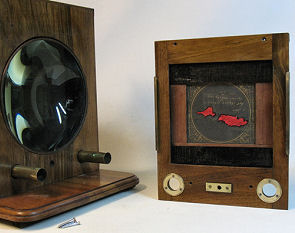|
|
Charles Barten an collector, restorer and lanternist with golden hands. |
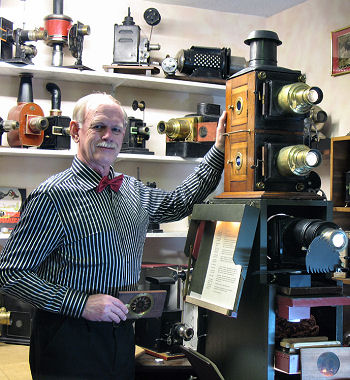 Just
a common house in a common town in Noord-Holland (the Netherlands), but when you
enter the house you swiftly feel yourself in a complete different world. The
world of more than a hundred years ago. The world of the Magic Lantern. Glass
showcases filled with beautiful magic lantern slides cover the walls and
upstairs, in his collector's room, a lot of shelves bear a great many magic
lanterns, from very small up to very large. 'There is no place for only one
more.' you think when you see all those apparatus standing there, but Charles
always succeeds to find a place for every new lantern he acquires. Sometimes
the lanterns are in an abominable condition, but with an endless patience he is
often able to restore that lantern to the state it had when it left the shop
long, long ago.
Just
a common house in a common town in Noord-Holland (the Netherlands), but when you
enter the house you swiftly feel yourself in a complete different world. The
world of more than a hundred years ago. The world of the Magic Lantern. Glass
showcases filled with beautiful magic lantern slides cover the walls and
upstairs, in his collector's room, a lot of shelves bear a great many magic
lanterns, from very small up to very large. 'There is no place for only one
more.' you think when you see all those apparatus standing there, but Charles
always succeeds to find a place for every new lantern he acquires. Sometimes
the lanterns are in an abominable condition, but with an endless patience he is
often able to restore that lantern to the state it had when it left the shop
long, long ago.'The training as an instrument maker I attended, allows me to perform almost any restoration of damaged lanterns.' tells Charles. I also can usually make the missing parts myself.' How did he get the idea to start collecting magic lanterns ? Charles tells: My father was a film operator by profession, so I came in touch with film and projectors at a young age already and showed a great interest in projecting movies. With lenses that I got or scrounged I made a projector of cardboard, the light source was a flat 4.5 volt battery with a small bulb from a flashlight and I used that to project cut off pieces of cinema movies that I got from my father. It was very exciting ! 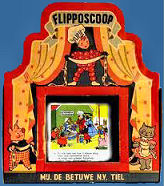 My mother and grandma always bought jam from
'De Betuwe'. The coupons at the jars could be exchanged for small books about Flipje
from Tiel. It was also possible to collect more coupons for a so called 'Flipposcoop'
in which long, paper film strips could be placed. By means of a small bulb
behind the pictures one was able to present the adventures of the fruit boy
Flipje and his friends, Flapoor the Elephant, Jasper the Monkey, and Bertje the Piglet. It was rather
difficult to change the strips for another, but the shows were very successful.
Money was pouring in: a penny a head! My mother and grandma always bought jam from
'De Betuwe'. The coupons at the jars could be exchanged for small books about Flipje
from Tiel. It was also possible to collect more coupons for a so called 'Flipposcoop'
in which long, paper film strips could be placed. By means of a small bulb
behind the pictures one was able to present the adventures of the fruit boy
Flipje and his friends, Flapoor the Elephant, Jasper the Monkey, and Bertje the Piglet. It was rather
difficult to change the strips for another, but the shows were very successful.
Money was pouring in: a penny a head! When I grew up I played with cinematographs, by which magic lantern slides as well as 35 mm films could be showed to the audience. The films were very inflammable and occasionally a small roll of it ended in flames. My first magic lantern slides were some 1.5 inch wide. They made a deep impression on me. I gave free rein to my  fantasy and empathized
intensively with the stories that were depicted on the slides. Still I have a
predilection for that tiny slides and their well known simple pictures and I
foster the memories of them. In the years 50 I also had a 35 mm filmstrip
projector, together with strips of Rapunzel, the Pied Piper of Hamelin, two
naughty boys Sjors and Sjimmie, and many more that could be purchased for one
guilder at the department stores. I also presented shows with this simple
lanterns for my friends.' fantasy and empathized
intensively with the stories that were depicted on the slides. Still I have a
predilection for that tiny slides and their well known simple pictures and I
foster the memories of them. In the years 50 I also had a 35 mm filmstrip
projector, together with strips of Rapunzel, the Pied Piper of Hamelin, two
naughty boys Sjors and Sjimmie, and many more that could be purchased for one
guilder at the department stores. I also presented shows with this simple
lanterns for my friends.'And that restoring.... how did that go ? 'Well, I was born in a working-class neighbourhood at the Dutch town of Alkmaar, where luxury was an unknown phenomenon and everybody had to be careful with the things he possessed. I also learned there to get on inventively with the few toys I owned. Repairing and smarting up things was very usual at that time. When I was rather young, I have been emigrated with my family to South Africa and lived there almost 25 year. While staying there I also worked with a lot of magic lanterns and film projectors and I also sold them. When back in the Netherlands I started a shop on curiosities and antiques. There again I restored and sold many projection apparatus. Some time later I started to collect magic lanterns myself and now I possess a nice collection, together with a large amount of magic lantern slides in all sizes. I present magic lantern shows for special occasions, but my priority is still collecting and restoring. It gives me good feelings to realize that many apparatus that are 'saved' by me, will grant much pleasure to our posterity many years after the day I passed away.' 'By the way,' Charles adds quickly, 'I also have my own magic lantern site. Just have a look at www.magic-lantern.eu.' |
|||
|
|
|||
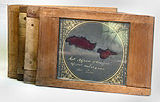 Among
the many magic lantern slides that Charles possesses are some 14 cm wide
slides, depicting heavenly bodies as they were known around 1900. He owns a
large amount of projectors, but not one is suitable for these 14 cm slides. When
he came across an enlarger at an auction he ignored the dirt and dust that
covered it and bought the apparatus. Because Charles has two right hands he was
sure that he was able to restore the bad looking apparatus to a beautiful magic
lantern. Among
the many magic lantern slides that Charles possesses are some 14 cm wide
slides, depicting heavenly bodies as they were known around 1900. He owns a
large amount of projectors, but not one is suitable for these 14 cm slides. When
he came across an enlarger at an auction he ignored the dirt and dust that
covered it and bought the apparatus. Because Charles has two right hands he was
sure that he was able to restore the bad looking apparatus to a beautiful magic
lantern. |
|||
| The restauration. | This is how Charles the enlarger found. The wooden parts were dried out, dirty and dusty, the brass parts were covered by a black layer and sometimes hardly to recognize as being brass. The lamp house and the cowl were attacked by rust, but fortunately not yet completely. The condenser and the lenses lay in pieces apart, but all the parts were present. |
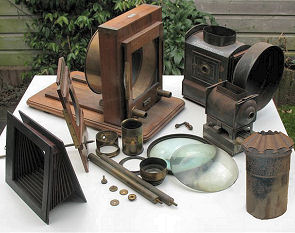 |
|
|
Charles starts by removing all the dirt
from the wooden parts. To do that he uses fine steel wool and a mixture of raw
linseed oil and turpentine in a ratio of 1 to 10. Immediately after that the
dirt must be swept away by a cloth or some tissues. Then again the wood is
cleaned with a clean piece of fine steel wool and a mixture of linseed oil and
turpentine, however this time in a ratio of 1 to 3. This mixture must be applied
with a light pressure in the direction of the grain of the wood. When after a few hours
the mixture is soaked in, the parts must be rubbed with a soft cloth to a
beautiful sheen. The linseed oil provides good nutrition for the timber and the
turpentine serves as a preventive measure against woodworm. The brass parts are also brushed with fine steel wool, now with a metal polish (Simichrome polish). It is important to take regularly a new piece of steel wool and to use sufficient polish. It takes a long time and it is a dirty job but the result is beautiful. After some months the brass obtains back its beautiful sheen, which then only has to be maintained with a soft cloth. |
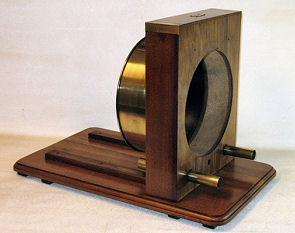 |
||
| When all the wooden and messing parts are cleaned carefully the assembly can begin. | |||
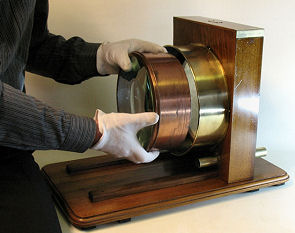 |
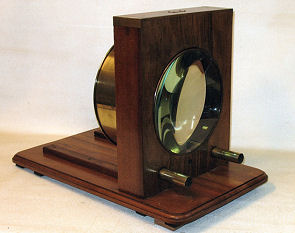 |
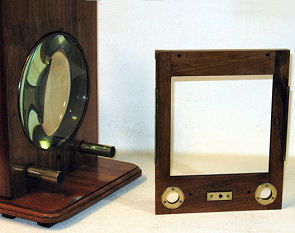 |
|
| Charles uses during assembly gloves to avoid finger prints. First he pushes the heavy condenser in its holder. | The condenser is mounted. Because Charles plans to use the lantern for displaying 14 cm slides, the original holder for the glass negatives has to be adjusted. It is too big and moreover the thickness of the holder is 9 mm, while the thickness of the slides he wants to use is 12 mm. | ||
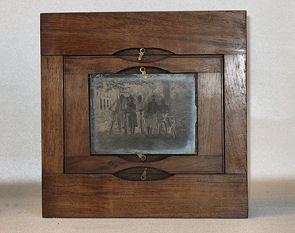 |
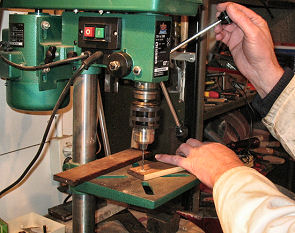 |
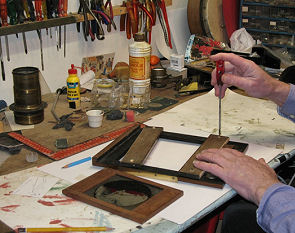 |
|
| The original slide holder. Glass photo negatives measuring 9 x 12 cm or 13 x 18 cm can be hold in place by means of small hinging clips. | To be able to use the lantern for his 14 cm high magic lantern slides he makes some small slats and screws them down on the slide holder. | ||
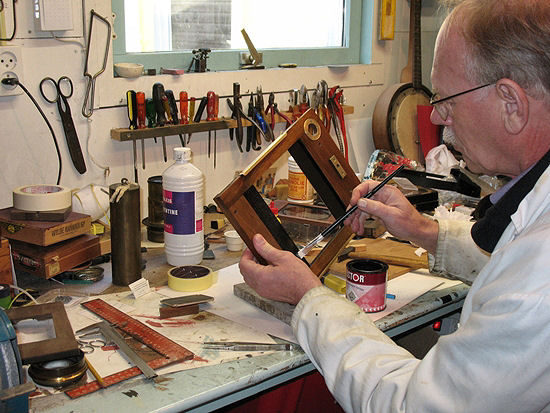 |
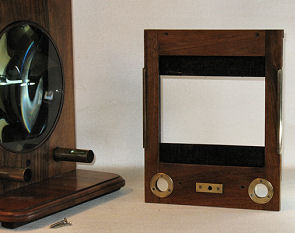
|
||
|
With a small brush and some black paint the slats are painted
matte black to eliminate reflection from the beam of light. The result comes up to expectations. Everything fits and glides perfectly. A stop is put in to prevent the slide to glide too far. |
|||
 |
 |
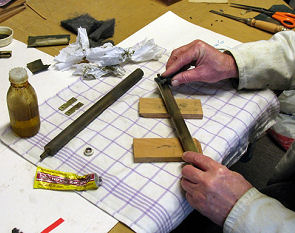 |
|
| Now the slide holder can be mounted. Then from the front a worm rod is screwed in by which the front part can slid in and out. The telescopic rods over which this section slides are also made of brass and of course they also must first be polished ...... | |||
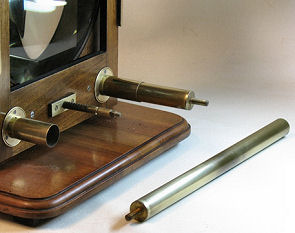 |
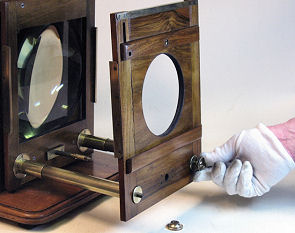 |
 |
|
| .......after which the rods are pushed in the holders. Then the front plate is mounted by fastening a pair of round nuts. The handle by which the front plate can be moved in and out can now be attached to the worm rod. | |||
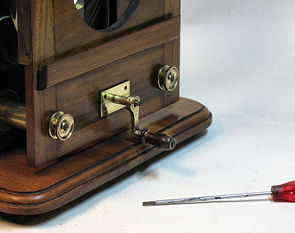 |
 |
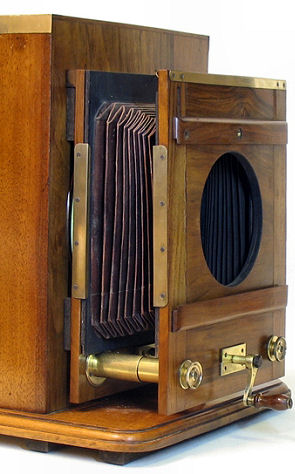 |
|
| That looks fine! Then the bellows which ensure that no light can escape are inserted. | |||
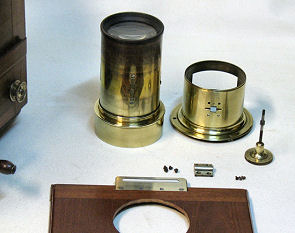 |
 |
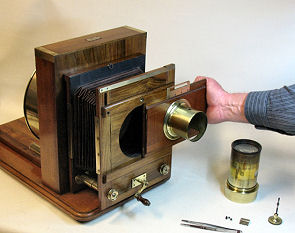 |
|
| The parts of the brass optics are screwed down on the wooden holder and finally placed on the front plate. | |||
 |
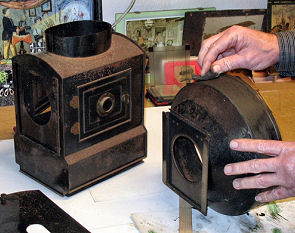 |
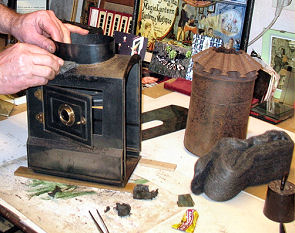 |
|
| Everything looks beautiful! Now a very tedious task remains: removing the rust on the body parts with fine steel wool. After all the rust is removed Charles rubs the lamp house and the cowl with stove polish. That must dry up for a moment and then the parts are made shiny by a dry cloth. | |||
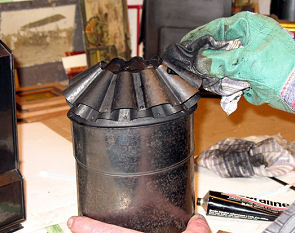 |
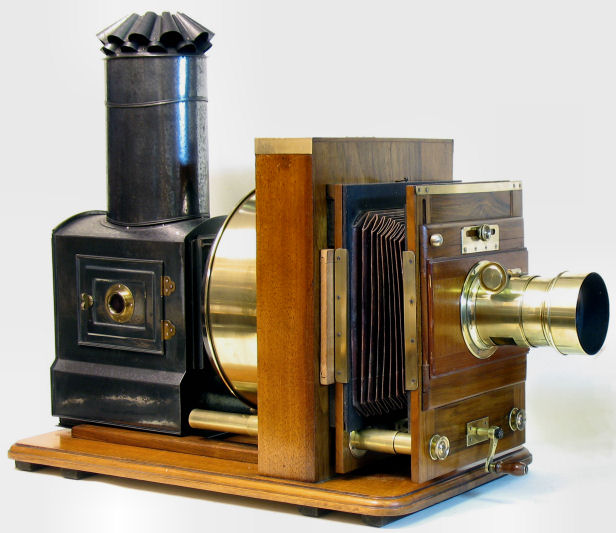 |
||
|
The stove polish gives the metal parts a
beautiful gloss. The lamp house is mounted on de base board, everything is a little rubbed up with a cloth and then this splendid lantern is ready to be shown to everyone, with becoming pride. |
|||
|
The final result! photo's: Charles Barten and Liesje Jonker. |
|||
| Nog zo'n goed gelukte restauratie. | |||
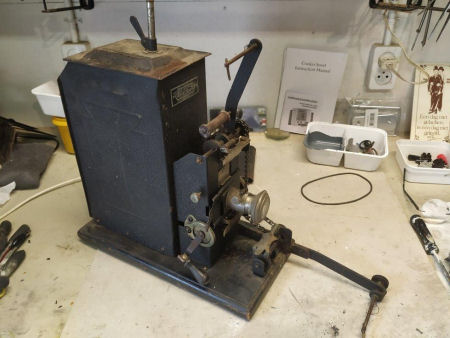 |
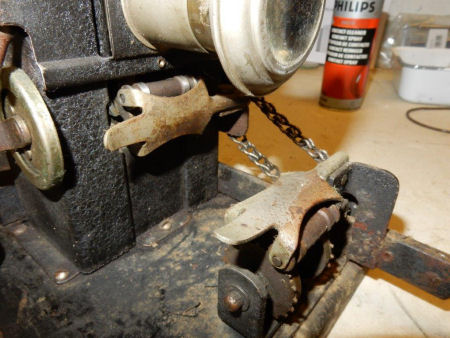 |
||
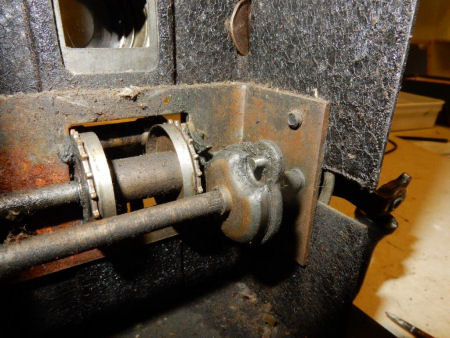 |
 |
||
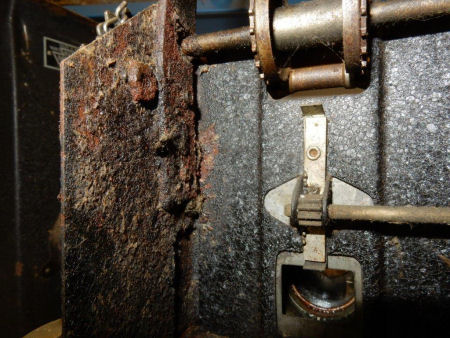 |
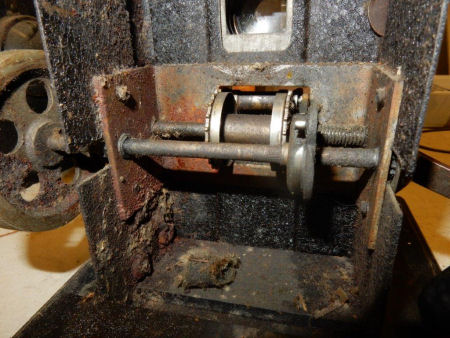 |
||
 |
As it was (above) and as it is now.....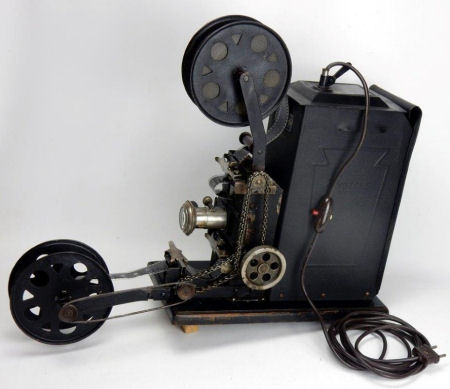 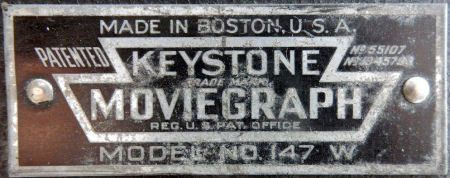 |
||
| An animation created by the webmaster using an existing single slipping slide and a few photos of Charles's face. |
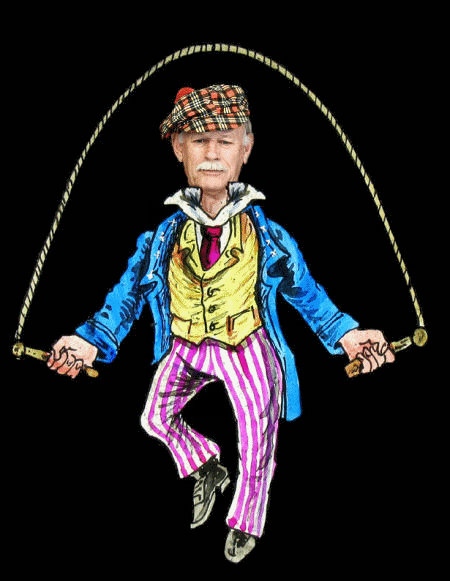 |
||
| |
©1997-2022 'de Luikerwaal' All rights reserved. Last update: 11-08-2022. |
|
